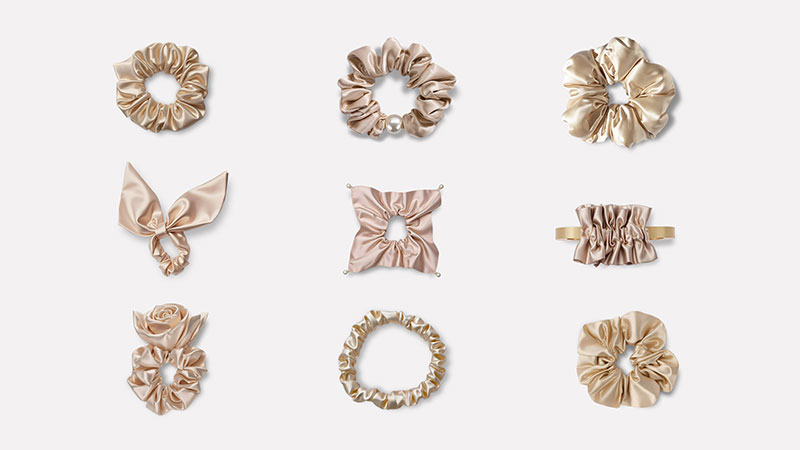Silk pillowcases have gained popularity in the beauty and skincare industry, often being touted as a solution for acne-prone skin. But do silk pillowcases really help with acne, or is it just a marketing gimmick? In this article, we will explore the benefits of silk pillowcases for acne, the science behind them, and whether they are worth the investment.
Table of Contents
How Acne Develops
Before understanding whether silk pillowcases help with acne, it’s essential to know what causes acne in the first place. Acne occurs when:
- Excess Oil Production: The skin produces too much sebum, clogging pores.
- Bacteria Build-Up: Bacteria such as Propionibacterium acnes contribute to breakouts.
- Dead Skin Cells: When not properly exfoliated, dead skin cells accumulate and clog pores.
- Friction & Irritation: Rough fabrics and dirty pillowcases can aggravate acne, leading to breakouts.
Since pillowcases come into direct contact with the face for hours each night, they can play a role in acne formation or prevention.
Can Silk Pillowcases Help with Acne?
Silk pillowcases offer several potential benefits for acne-prone skin. While they are not a cure, they can help reduce acne triggers.
① Silk Is Less Absorbent Than Cotton
- Cotton pillowcases absorb moisture, including facial oils, sweat, and skincare products.
- Silk, on the other hand, is less absorbent, meaning it won’t soak up as much oil and bacteria from your skin.
- This can help prevent clogged pores and bacterial build-up, reducing the risk of breakouts.
② Silk Reduces Friction & Irritation
- Rough fabrics like cotton or polyester can cause friction, irritating sensitive skin.
- Silk is smooth and soft, reducing skin irritation and preventing inflammation that can worsen acne.
- Less friction also helps prevent “sleep creases” that could lead to long-term skin damage.
③ Silk Has Natural Hypoallergenic Properties
- Silk is naturally resistant to dust mites, mold, and allergens, which can contribute to skin irritation.
- For people with sensitive, acne-prone skin, this can be beneficial in preventing allergic reactions that may exacerbate breakouts.
④ Silk Helps Maintain Skin Hydration
- Unlike cotton, which absorbs moisture from the skin, silk helps retain hydration.
- Keeping the skin properly hydrated can support the skin barrier and reduce excessive oil production, which is a key factor in acne.
Are Silk Pillowcases a Guaranteed Acne Solution?
While silk pillowcases have skin-friendly properties, they are not a magic cure for acne. They can help reduce irritation and bacterial transfer, but they won’t treat the root causes of acne, such as hormonal imbalances, diet, or poor skincare habits.
What Else Should You Do for Acne Prevention?
✔ Wash Your Pillowcase Regularly – Even silk pillowcases can accumulate dirt and oil over time, so wash them at least twice a week.
✔ Follow a Proper Skincare Routine – Cleansing, exfoliating, and moisturizing are key to preventing acne.
✔ Avoid Touching Your Face – This prevents bacteria from transferring to your skin.
✔ Use Non-Comedogenic Products – Ensure your skincare and makeup products don’t clog pores.
How to Choose the Best Silk Pillowcase for Acne-Prone Skin
To get the best results from a silk pillowcase, consider the following factors:
✓ Opt for 100% Pure Mulberry Silk
- Mulberry silk is the highest quality silk, known for its smooth texture and durability.
✓ Pick a Higher Momme Weight (19-22 Momme)
- Momme refers to the density of the silk fabric. A 19-22 momme silk pillowcase offers the best balance of softness and durability.
✓ Look for OEKO-TEX Certification
- This certification ensures the silk is free from harmful chemicals, making it safer for sensitive skin.
✓ Consider Silk Pillowcases with Zipper Closures
- A zipper closure helps keep the pillowcase securely in place, preventing unnecessary friction when you sleep.
Conclusion: Are Silk Pillowcases Worth It for Acne?
Silk pillowcases can be beneficial for acne-prone skin, but they are not a standalone solution. They help by reducing friction, limiting bacteria transfer, and maintaining skin hydration, which can contribute to clearer skin over time.
However, for significant acne improvement, you should combine the use of a silk pillowcase with a consistent skincare routine, a healthy diet, and regular pillowcase washing. If you struggle with persistent acne, consulting a dermatologist is always the best approach.
Final Verdict:
✔ Silk pillowcases help acne-prone skin by reducing irritation and bacteria build-up.
✘ They do not directly treat acne or replace a proper skincare routine.
If you are looking for a small, luxurious change that may benefit your skin, investing in a high-quality silk pillowcase is definitely worth considering!
Request An Instant Quote For Your Brand!
You May Also Find These Topics Interesting

Custom Silk Scrunchies: The Ultimate OEM Guide for Beauty & Hair Brands
Custom Silk Scrunchies: The Ul

Top 10 Silk Clothing Manufacturers in the World
Top 10 Silk Clothing Manufactu

How to Store Silk Scarves Properly: A Complete Guide to Long-Lasting Elegance
How to Store Silk Scarves Prop
